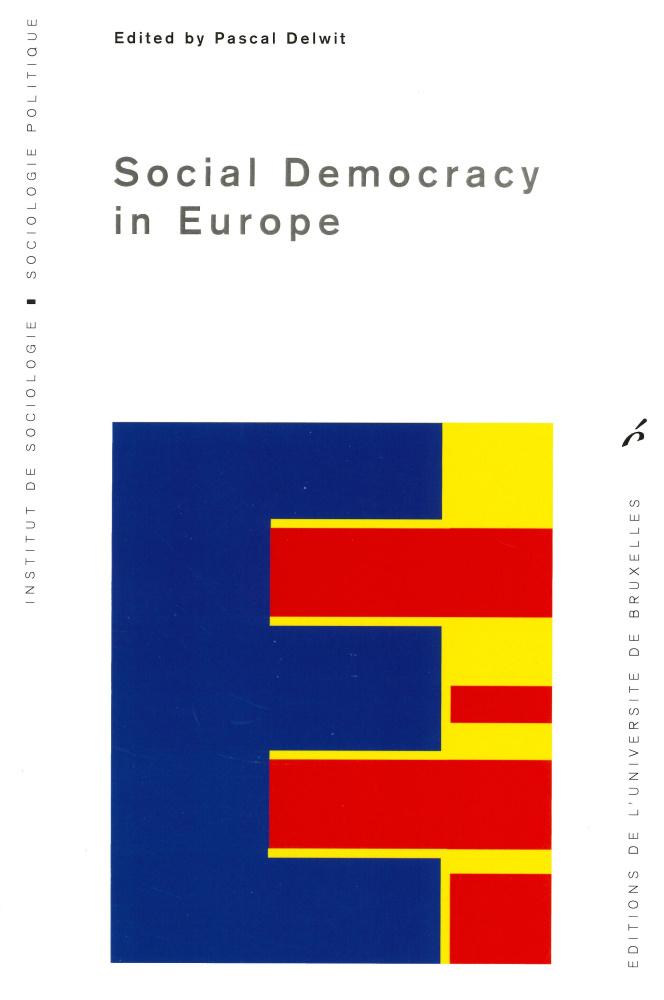Social Democracy in Europe
Première édition
This book analyses the different aspects of Social Democracy, not only in Western Europe, but also in Central and Eastern Europe Lire la suite
Socialist and Social Democratic parties leave few political observers and citizens indifferent. For several years, a certain number of actors on the political scene have presented it as a political family in crisis, lacking in imagination and dynamism, incapable of renewal and doomed to fade into insignificance. Others, on the contrary, describe it as a grouping with a promising, even brilliant future.
This book does not set out to confirm either of those two visions. Its aim is to analyse in-depth the transformations which are affecting, at the current time, the different aspects of Social Democracy: new organisational models, changes in political and electoral performance, changing relations with the trade unions and civil society associations, reactions to the emergence of new political rivais and new values, new ideological trends and political programmes, etc.
For the first time, the analysis does not concern exclusively Western Europe, but also deals with the Social Democratic parties of the consolidated democracies and the organisations that claim to be part of democratic socialism in Central and Eastern Europe, and highlights the specific characteristics and points in common. At the dawn of the 21st century, it is therefore the challenges and the different responses to those challenges that are analysed by several of the leading European specialists in Social Democratic parties in Europe.
Spécifications
- Éditeur
- Éditions de l'Université de Bruxelles
- Édité par
- Pascal Delwit,
- Contributions de
- Attila Ágh, David S. Bell, John Callaghan, Gabriel Colomé, Pascal Delwit, Petia Gueorguieva, Robert Ladrech, Philippe Marlière, Gerassimos Moschonas, Daniel-Louis Seiler, Bruno Villalba, Jerzy J. Wiatr,
- Collection
- Science politique | n° 19
- ISSN
- 13786571
- Langue
- English
- Site web ressource
- Oapen.org
- Catégorie (éditeur)
- > Science politique
- BISAC Subject Heading
- POL058000 POLITICAL SCIENCE / World / European
- Code publique Onix
- 06 Professionnel et académique
- CLIL (Version 2013-2019 )
- 3283 SCIENCES POLITIQUES
- Subject Scheme Identifier Code
- Classification thématique Thema: Processus et structure politique
- Date de publication
- 01 janvier 2000
- ISBN-13
- 978-2-8004-1228-3
- Ampleur
- Nombre de pages de contenu principal : 132
- Code interne
- 1228
- ONIX XML
- Version 2.1, Version 3
Google Livres Aperçu
Sommaire
Préface | Ginette KURGAN et Serge JAUMAIN
Introduction
Remerciements
Abréviations
CHAPITRE I – Les origines
1. La fondation de Hirsch & Cie
2. Les premières années
3. Léo Hirsch : un paternalisme exemplaire
CHAPITRE II – Le XIXe siècle
1.Le fonctionnement d'une Maison de Couture
1. L'organisation de l'espace et l'utilisation des nouvelles techniques
2. Les employés et la clientèle
3. Les articles et les fournisseurs
2. Le rayonnement
3. Un grand magasin ?
CHAPITRE III – L’entre-deux-guerres
1. La transmission de la direction
2. L’organisation de la Maison
1. Le travail et la fabrication
2. Les fournisseurs, les articles et les rayons
3. Les clientes
4. L’organisation spatiale des magasins
5. La succursale d’Ostende
3. Une maison de Haute Couture
4. La crise
1. Hirsch & Cie, à Bruxelles
2. Bernard & Cie, à Paris
CHAPITRE IV – La seconde guerre mondiale
1. Sous le joug de l’Occupant
2. La couture en temps de guerre
1. Les problèmes de personnel
2.Les difficultés matérielles
3. Les clients et les fournisseurs
3. Une gestion prudente
1. Les statuts
2. Les réquisitions de personnel et le travail pour l’Occupant
3. La doctrine Galopin à la fin de la guerre
4. Les modèles de guerre
CHAPITRE V – La fermeture de la Maison Hirsch
1. Les derniers fastes
1. L’organisation de la direction et du travail dans l’entreprise
2. La situation financière
3. L’image de marque de la Maison
2. La Haute Couture ou les grands magasins
3. Pourquoi liquider ?
Conclusion
Sources
Bibliographie
Annexes
Index biographique

